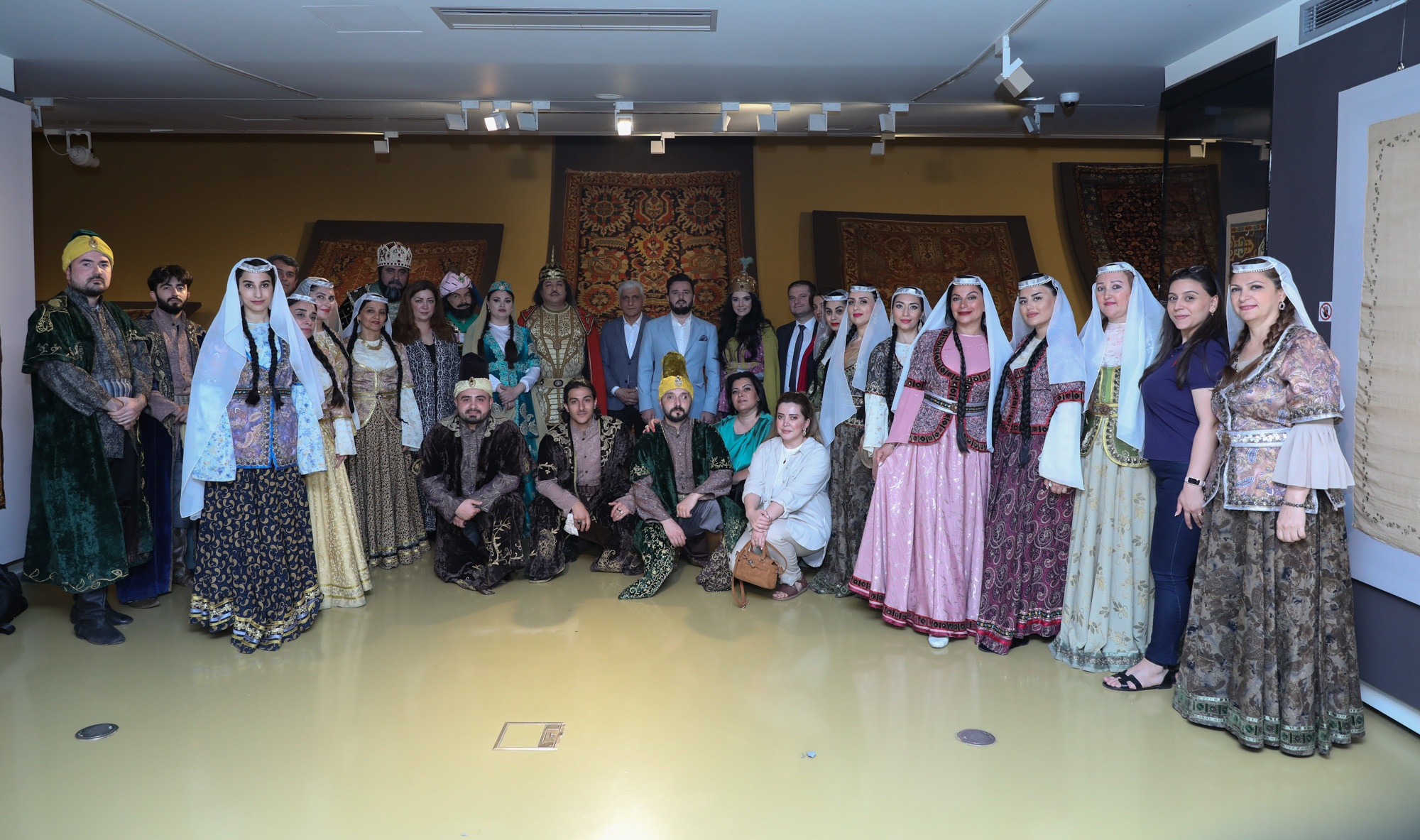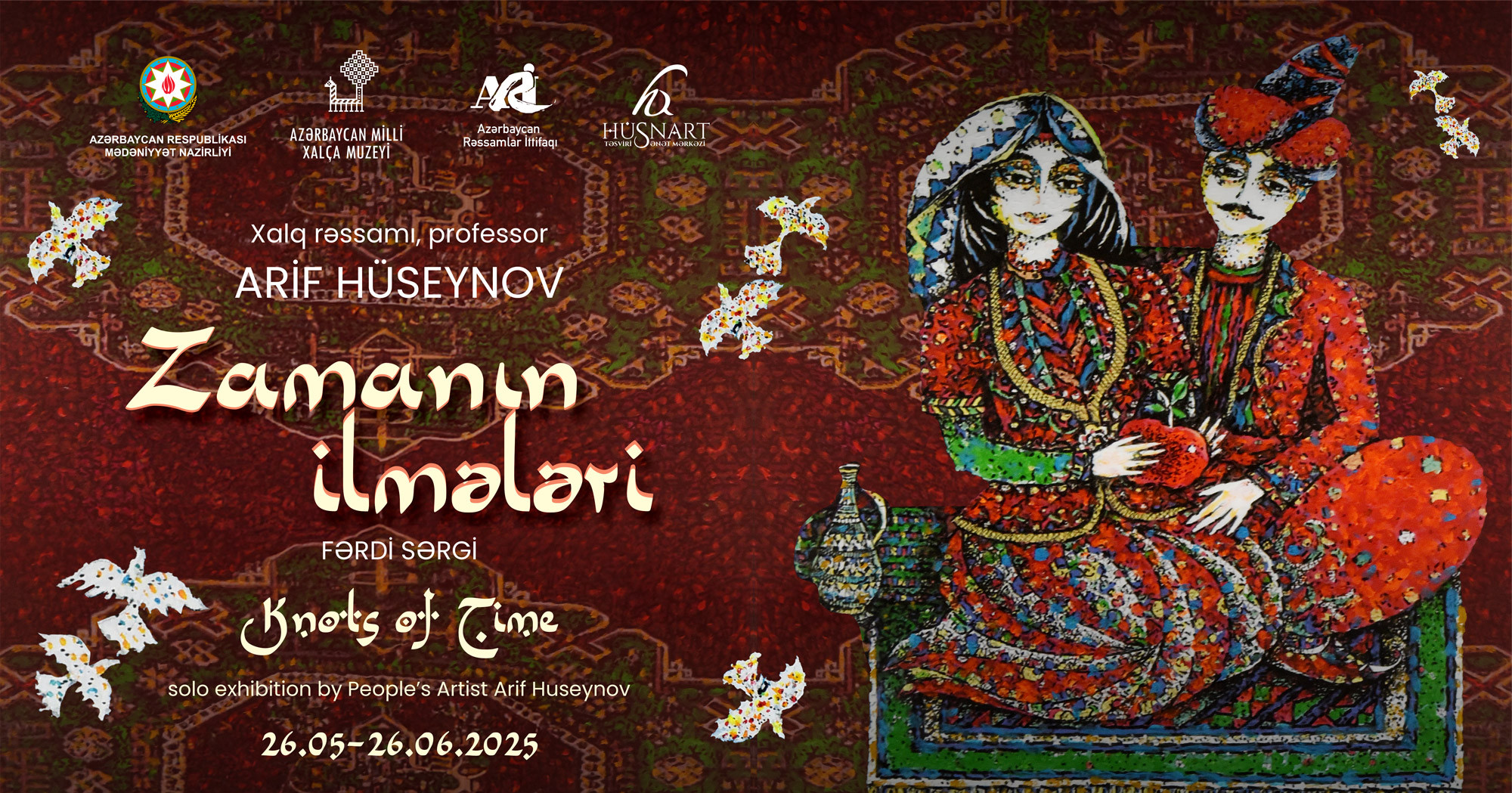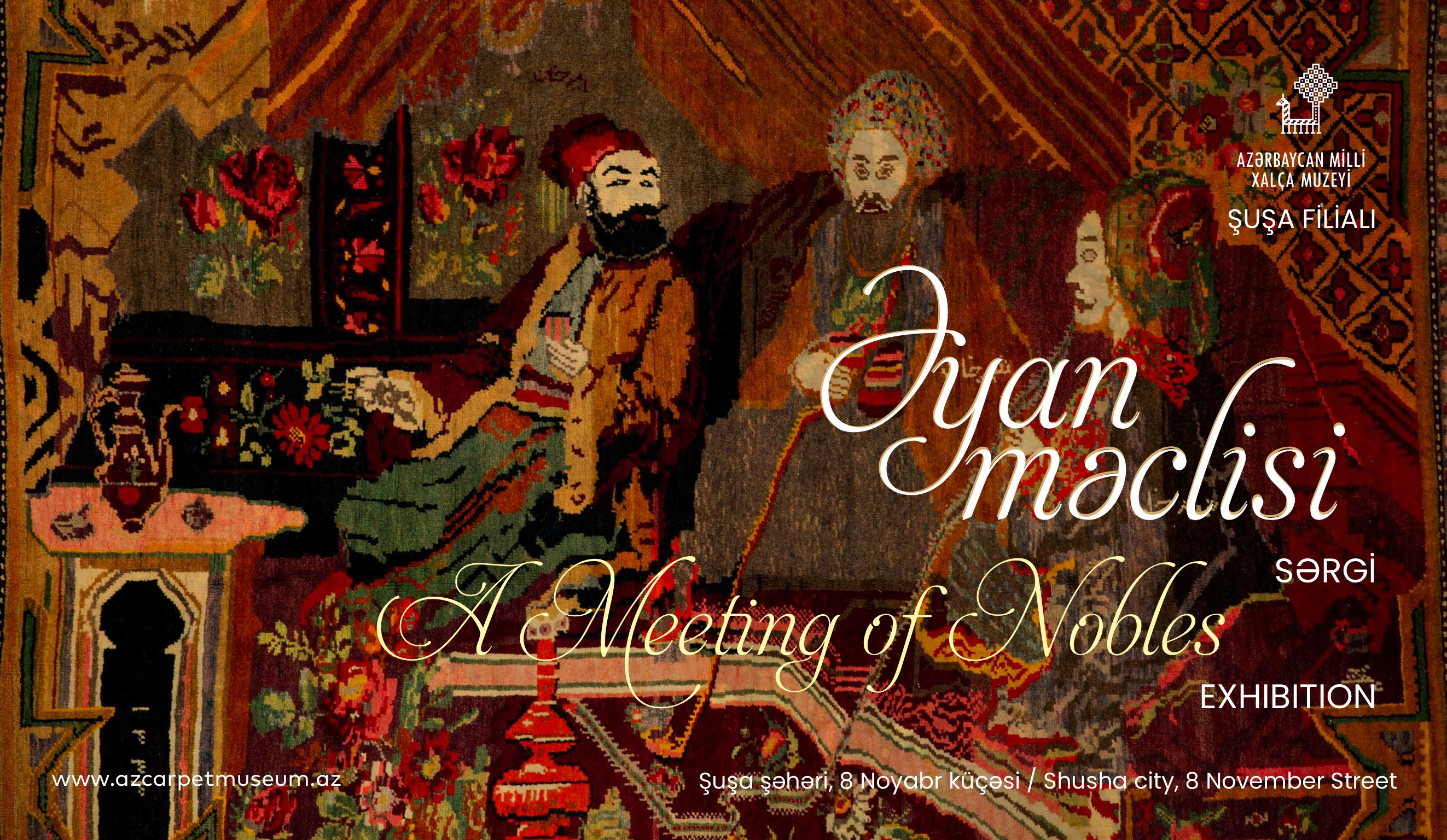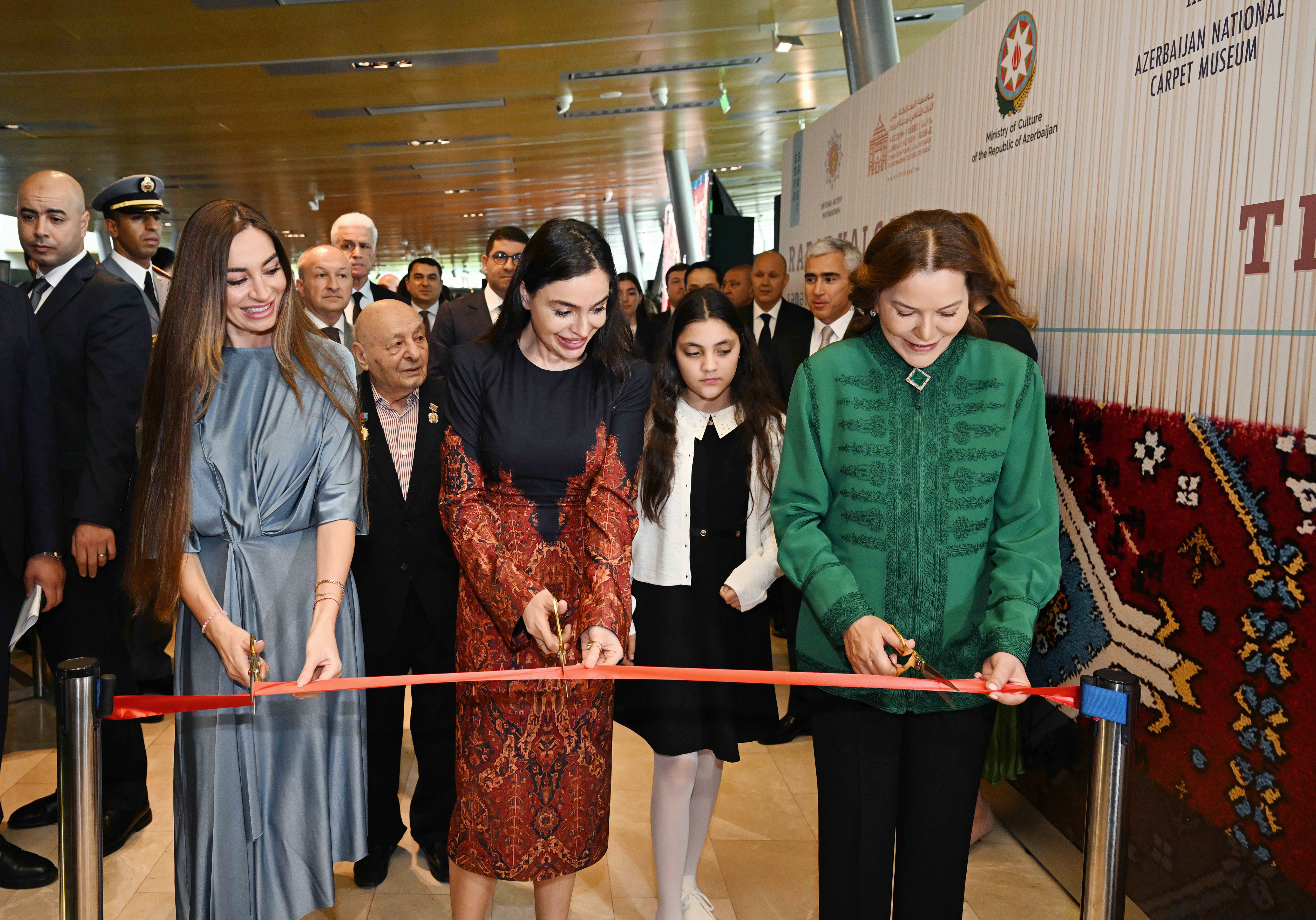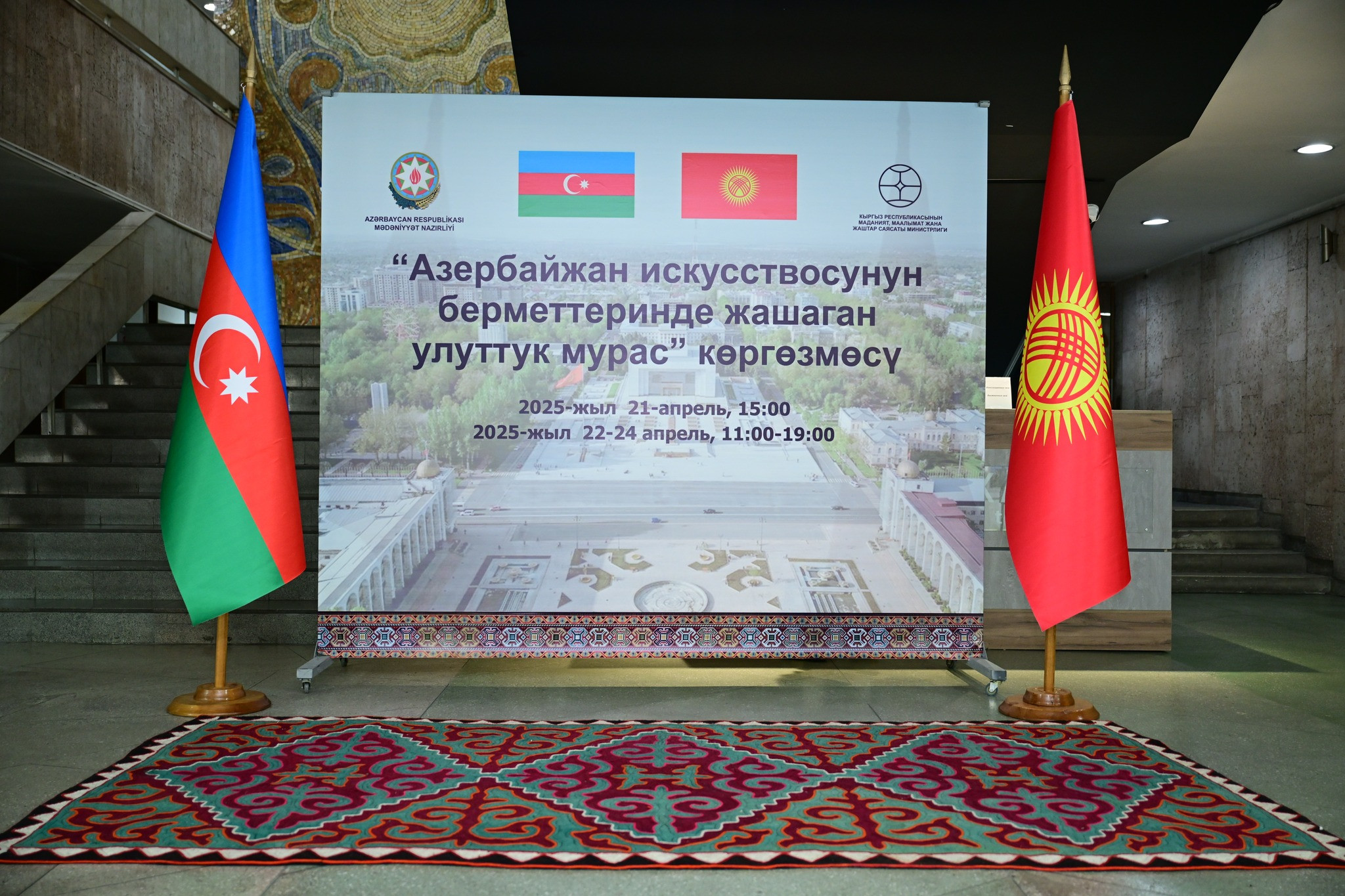Carpet Khan
Carpet Khan. Guba, Azerbaijan. Late 19th century - early 20th century. Wool. Pile, handmade. Azerbaijan National Carpet Museum collection
This Khan carpet of Guba group is on display at the exhibition Carpet Art. Evolution of Meanings in the Kazan Kremlin, the Manege exhibition hall.
At industrial fairs in the 19th century, these carpets were popularly called Kuba. Today, carpet weavers call it Khan, while art historians name this carpet Khan-Gonagkend. The name Khan comes from the word khoan, which in the Middle East means a tablecloth. These carpets with beautiful floral patterns were a spectacular decoration at feasts.
The central field of the Khan carpet consists of several rapports, symmetrical horizontally and asymmetric vertically. The medieval curvilinear ornament islimibandlik gets a new form here, being geometrized. The border is typical for the Guba-Shirvan type of carpet weaving and is unique in its color design. The image of beige branches against a dark blue background is characteristic only of the Khan carpets.
Exhibition runs until 5 September.
